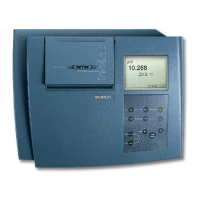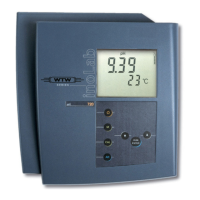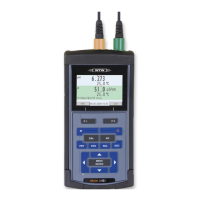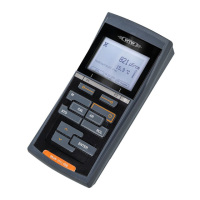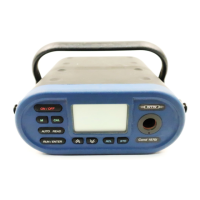Conductivity inoLab
®
Multi 9620 IDS
82 ba77173e04 12/2017
9.1.2 Measuring the temperature
For reproducible conductivity measurements, it is essential to measure the
temperature of the test sample.
IDS sensors measure the temperature with a temperature sensor integrated in
the IDS sensor.
9.2 Temperature compensation
The calculation of the temperature compensation is based on the preset refer-
ence temperature, 20 °C or 25 °C. It appears on the display as Tr20 or Tr25.
You can select one of the following temperature compensation methods:
Nonlinear temperature compensation (nLF) according to ISO 7888
Linear temperature compensation (Lin) with adjustable coefficient
No temperature compensation (off)
Application tips Select the following temperature compensations given in the table according to
the respective test sample:
9.3 Calibration
9.3.1 Why calibrate?
Aging slightly changes the cell constant, e.g. due to coatings. As a result, an
inexact measured value is displayed. The original characteristics of the cell can
often be restored by cleaning the cell. Calibration determines the current value
of the cell constant and stores this value in the meter.
Thus, you should calibrate at regular intervals.
The reference temperature and temperature compensation are set
in the menu for the parameter, conductivity (see section 11.5.1 S
ET-
TINGS FOR IDS CONDUCTIVITY SENSORS, page 102).
Test sample Temperature compensation Display
Natural water
(ground water, surface
water, drinking water)
nLF
according to ISO 7888
nLF
Ultrapure water nLF
according to ISO 7888
nLF
Other aqueous solu-
tions
lin
Set linear temperature coeffi-
cient 0.000 ... 10.000 %/K
lin
Salinity (seawater) Automatic nLF according to
IOT (International Oceano-
graphic Tables)
Sal, nLF
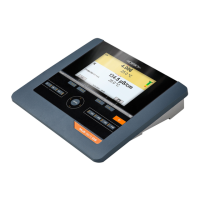
